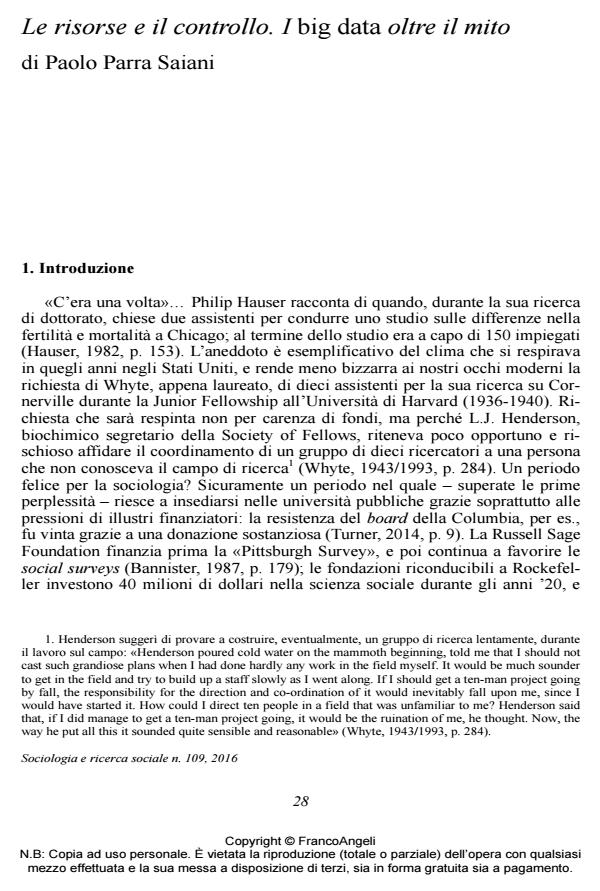Resources and Control. Big Data beyond the Myth
Journal title SOCIOLOGIA E RICERCA SOCIALE
Author/s Paolo Parra Saiani
Publishing Year 2016 Issue 2016/109
Language Italian Pages 14 P. 28-41 File size 76 KB
DOI 10.3280/SR2016-109004
DOI is like a bar code for intellectual property: to have more infomation
click here
Below, you can see the article first page
If you want to buy this article in PDF format, you can do it, following the instructions to buy download credits

FrancoAngeli is member of Publishers International Linking Association, Inc (PILA), a not-for-profit association which run the CrossRef service enabling links to and from online scholarly content.
Cuts in research and in particular to social research periodically incite petitions and warnings from the main European scientific associations. What are the consequences and challenges posed by the reduction in resources available for research purposes? Can Big Data be an answer, a solution, a way to access the information in a cost-effective way? Or will they increase the gap between rich and poor universities, and the level of inequality between researchers? Is it a way to finally lay the foundations for the society of information and knowledge glimpsed in recent decades, or will the growing importance of Big Data in the research be accompanied by problems still not entirely clear?
- Handbook of Research on Advanced Research Methodologies for a Digital Society Costantino Cipolla, pp.42 (ISBN:9781799884736)
Paolo Parra Saiani, Le risorse e il controllo. I big data oltre il mito in "SOCIOLOGIA E RICERCA SOCIALE " 109/2016, pp 28-41, DOI: 10.3280/SR2016-109004